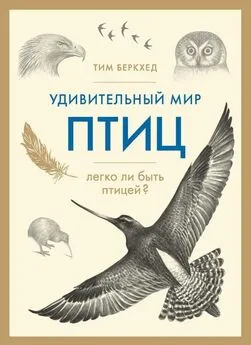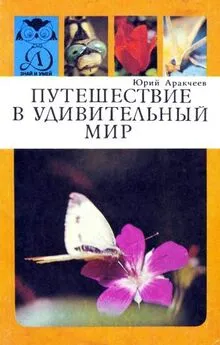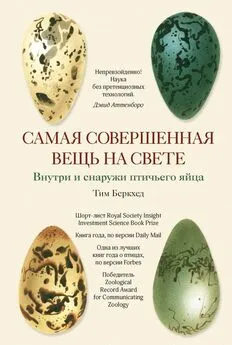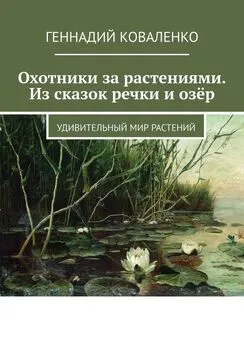Тим Беркхед - Удивительный мир птиц. Легко ли быть птицей?
- Название:Удивительный мир птиц. Легко ли быть птицей?
- Автор:
- Жанр:
- Издательство:Литагент Аттикус
- Год:2019
- Город:Москва
- ISBN:978-5-389-17468-9
- Рейтинг:
- Избранное:Добавить в избранное
-
Отзывы:
-
Ваша оценка:
Тим Беркхед - Удивительный мир птиц. Легко ли быть птицей? краткое содержание
«Я попытался подвести итог тому, что мы знаем в настоящее время, и вместе с тем – тому, чего мы еще не знаем о чувствах птиц. Наши представления о сенсорных системах человека развиваются не по дням, а по часам, и если история что-нибудь да значит – а я в этом уверен, – тогда открытия, связанные с чувствами людей, неизбежно позволят нам предпринять подобные исследования для птиц. Кроме того, история со всей наглядностью свидетельствует, что наши открытия, относящиеся к птицам (и к другим животным), имеют колоссальное значение и для людей». (Тим Беркхед)
Удивительный мир птиц. Легко ли быть птицей? - читать онлайн бесплатно ознакомительный отрывок
Интервал:
Закладка:
Hill A. Can birds smell? // Nature. 1905. 1840. P. 318, 319.
Hill G. E . Ivorybill Hunters. Oxford: Oxford University Press, 2007.
Hill G. E., McGraw K. J . Bird Coloration: Function and Evolution. Cambridge, MA: Harvard University Press, 2006.
Hinde R. A . Animal Behaviour: A Synthesis of Ethology and Comparative Psychology. Maidenhead: McGraw-Hill, 1966. ( Хайнд Р. Поведение животных: синтез этологии и сравнительной психологии. М.: Мир, 1975.)
Hinde R. A . Ethology. Oxford: Oxford University Press, 1982.
Hingston R. W. G . The Meaning of Animal Colour and Adornment. L.: Edward Arnold, 1933.
Homberger D. G., de Silva K. N. Functional microanatomy of the feather-bearing integument: implications for the evolution of birds and avian flight // American Zoologist. 2000. 40. P. 553–574.
Howland H. C., Merola S., Basarab J. R . The allometry and scaling of the size of vertebrate eyes // Vision Research. 2004. 44. P. 2043–2065.
Hulse S. H., MacDougall-Shackleton S. A., Wisniewski A. B. Auditory scene analysis by songbirds: stream segregation of birdsong by European starlings ( Sturnus vulgaris ) // Journal of Comparative Psychology. 1997. 111. P. 3–13.
Hultcrantz M., Simonoska R. Estrogen and hearing: a summary of recent investigations // Acta Oto-Laryngologica. 2006. 126. P. 10–14.
Hunter M. L., Krebs J. R. Geographical variation in the song of the great tit ( Parus major ) in relation to ecological factors // Journal of Animal Ecology. 1979. 48. P. 759–785.
Hutchinson L. V., Wenzel M. Olfactory guidance in foraging by Procellariiforms // The Condor. 1980. 82. P. 314–319.
Ings S. The Eye: A Natural History. L.: Bloomsbury, 2007.
Jackson C. E . Dictionary of Bird Artists of the World. Woolbridge: Antique Collectors’ Club, 1999.
Järvi T., Sillén-Tullberg B., Wiklund C. The cost of being aposematic: an experimental study of predation on larvae of Papilio achaon by the great tit Parus major // Oikos. 1981. 36. P. 267–272.
Jenner E . Observations on the natural history of the cuckoo // Philosophical Transactions of the Royal Society. 1788. 78. P. 219–237.
Jitsumori M., Natori M., Okuyama K . Recognition of moving video images of conspecifics by pigeons: effects of individual static and dynamic motion cues // Animal Learning & Behavior. 1999. 27. P. 303–315.
Jones D. N., Goth A. Mound-builders. Victoria, Australia: CSIRO Publishing, 2008.
Jones R. B., Roper T. J . Olfaction in the domestic fowl: a critical review // Physiology & Behavior. 1997. 62. P. 1009–1018.
Jordt S. E., Julius D . Molecular basis for species-specific sensitivity to «hot» chili peppers // Cell. 2002. 108. P. 421–430.
Jouventin P., Weimerskirch H. Satellite tracking of wandering albatrosses // Nature. 1990. 343. P. 746–748.
Kare M. R., Mason J. R. Chemical senses in birds // Avian Physiology / Ed. P. D. Sturkie. N.Y.: Springer Verlag, 1986.
Keverne E. B., Martensz N. D., Tuite B. Beta-endorphin concen- trations in cerebrospinal fluid of monkeys are influenced by grooming relationships // Psychoneuroendocrinology. 1989. 14. P. 155–161.
Knox A. G. Handedness in crossbills Loxia and the akepa Loxops coccinea // Bulletin of the British Ornithologists’ Club. 1983. 103. P. 114–118.
Komisaruk B. R., Beyer C., Whipple B. Orgasm // The Psychologist. 2008. 21. P. 100–103.
Komisaruk B. R., Beyer-Flores C., Whipple B. The Science of Orgasm. Baltimore, MD: John Hopkins University Press, 2006.
Konishi M. How the owl tracks its prey // American Scientist. 1973. 61. P. 414–424.
Konishi M., Knudsen E. L . The oilbird: hearing and echolocation // Science. 1979. 204. P. 425–427.
Koyama S. Tricks Using Varied Tits: Its History and Structure / in Japanese. Tokyo: Hosei University Press, 1999.
Krebs J. R., Davies N. B. Behavioural Ecology: An Evolutionary Approach. 4th edn. Oxford: Blackwell, 1997.
Krulis V. Struktur und Verteilung von Tastrezeptoren im Schnabel-Zungenbereich von Singvögeln im besonderen der Fringillidae // Revue Suisse de Zoologie. 1978. 85. P. 385–447.
Lack D. Swifts in a Tower. L.: Methuen, 1956.
Lack D. Ecological Adaptations for Breeding in Birds. L.: Methuen, 1968.
Lane N. Life Ascending. L.: Profile Books, 2009. ( Лейн Ник . Лестница жизни: десять величайших изобретений эволюции. М.: АСТ: CORPUS, 2014.)
Lea R. B., Klandorf H. The brood patch // Avian Eggs and Incubation / Ed. C. Deeming. Oxford: Oxford University Press, 2002. P. 156–189.
Lesson R. P . Traite d’ornithologie. Paris: Bertrand, 1831.
Lockley R. M. Shearwaters. L.: Dent, 1942.
Lohmann K. J . Animal behaviour: magnetic-field perception // Nature. 2010. 464. P. 1140–1142.
Lucas J. R., Freeberg T. M., Long G. R., Krishnan A. Seasonal va- riation in avian auditory evoked responses to tones: a comparative analysis of Carolina chickadees, tufted titmice, and white-breasted nuthatches // Journal of Comparative Physiology A. 2007. 193. P. 201–215.
Macdonald H . Falcon. L.: Reaktion Books, 2006.
Majnep I. S., Bulmer R . Birds of my Kalam Country // Auckland, NZ: Auckland University Press, 1977.
Malpighi M. Epistolae Anatomicae de Cerebro ac Lingua. Bologna, Italy: Typis Antonij Pisarrij, 1665.
Marler P. Developments in the study of animal communication // Darwin’s Biological Work / Ed. P. R. Bell. Cambridge: Cambridge University Press, 1959. P. 150–206.
Marler P., Slabbekoorn H. W . Nature’s Music: The Science of Birdsong. L.: Academic Press, 2004.
Marshall A. J . Biology and Comparative Physiology of Birds. N.Y.: Academic Press, 1961.
Martin G. Birds by Night. L.: Poyser, 1990.
Martin G. R., Osorio D . Vision in birds // The Senses: A Comprehensive Reference / Ed. A. I. Basbaum, A. Kaneko, G. M. Shepherd, G. Westheimer, T. D. Albright, R. H. Masland, P. Dallos, D. Oertel, D. Firestein, G. K. Beauchamp, M. C. Bushnell, J. C. Kaas, E. Gardner. Berlin: Elsevier, 2008.
Martin G. R., Wilson K.-J., Wild J. M., Parsons S., Kubke M. F., Corfield, J . Kiwi forego vision in the guidance of their nocturnal activities // PLoS ONE. 2007. 2 (2) e198. 1–6.
Mason J. R., Clark L. The chemical senses of birds // Sturkie’s Avian Physiology / Ed. P. D. Sturkie. San Diego: Academic Press, 2000. P. 39–56.
McCurrich J. P . Leonardo da Vinci: The Anatomist. Washington, DC: Carnegie Institute, Washington, 1930.
McFarland D. The Oxford Companion to Animal Behaviour. N.Y.: Oxford University Press, 1981.
Merton D. V., Morris R. B., Atkinson I. A. E . Lek behaviour in a parrot: the kakapo Strigops habroptilus of New Zealand // The Ibis. 1984. 126. P. 277–283.
Middendorf A. V . Die Isepiptesen Rusßlands // Mémoires de l’Académie Impériale des Sciences de St. Pétersbourg. 1859. VI. P. 1–143.
Mikkola H. Owls of Europe. N.Y.: T. & A. D. Poyser, 1983.
Miller L. Some tagging experiments with back-footed albatrosses // The Condor. 1942. 44. P. 3–9.
Mockford E. J., Marshall R. C . Effect of urban noise on song and response behaviour in great tits // Proc. R. Soc. Lond. B. 2009. 276. P. 2976–2985.
Montagu G. Ornithological Dictionary. L.: White, 1802.
Montagu G. Supplement to the Ornithological Dictionary. Exeter: Woolmer, 1813.
Montgomerie R., Birkhead T. R . Samuel Pepys’s hand-coloured copy of John Ray’s «The Ornithology of Francis Willughby» (1678) // J. Ornithol. 2009. 150. P. 883–891.
Montgomerie R., Weatherhead P. J. How robins find worms // Animal Behaviour. 1997. 54. P. 143–151.
More H. An Antidote Against Atheism: Or an Appeal to the Natural Faculties of the Minds of Man, Whether there be not a God. L.: Daniel, 1653.
Morton E. S . Ecological sources of selection on avian sounds // American Naturalist. 1975. 109. P. 17–34.
Nagel T. What is it like to be a bat? // The Philosophical Review. 1974. 83. P. 435–450. ( Нагель Т . Каково быть летучей мышью? // Глаз разума: Фантазии и размышления о самосознании и о душе / Сост. и обраб. Даглас Р. Хофштадтер и Дэниэл К. Деннетт. Самара: Бахрах-М, 2003. С. 349–360.)
Naguib M. Auditory distance assessment of singing conspecifics in Carolina wrens: the role of reverberation and frequency-dependent attenuation // Animal Behaviour. 1995. 50. P. 1297–1307.
Necker R. Observations on the function of a slowly-adapting mechanoreceptor associated with filoplumes in the feathered skin of pigeons // Journal of Comparative Physiology A. 1985. 156. P. 391–394.
Nelson J. B . The Gannet. Berkhamsted: Poyser, 1978.
Nevitt G. A. Sensory ecology on the high seas: the odor world of the procellariforme seabirds // Journal of Experimental Biology. 2008. 211. P. 1706–1713.
Nevitt G. A., Hagelin J. C. Olfaction in birds: a dedication to the pioneering spirit of Bernice Wenzel and Betsy Bang // Annals of the New York Academy of Sciences. 2009. 1170. P. 424–427.
Nevitt G. A., Losekoot M., Weimerskirch H . Evidence for olfactory search in wandering albatross, Diomedea exulans // Proceedings of the National Academy of Sciences, USA. 2008. 105. P. 4576–4581.
Newton A. A Dictionary of Birds. L.: A. & C. Black, 1896.
Nilsson D. E., Pelger S. A pessimistic estimate of the time required for an eye to evolve // Proc. R. Soc. Lond. B. 1994. 256. P. 53–58.
Nottebohm F. Asymmetries in neural control of vocalization in the canary // Lateralisation in the Nervous System / Ed. S. Harnad, R. W. Doty, L. Goldstein, J. Jaynes, G. Krauthamer. N.Y.: Academic Press, 1977.
Novick A. Acoustic orientation in the cave swiftlet // Biological Bulletin. 1959. 117. P. 497–503.
Owen R. No title // Proceedings of the Zoological Society of London. 1837. P. 33–35.
Owen R . Memoirs on the Extinct Wingless Birds of New Zealand. With an Appendix on Those in England, Australia, Newfoundland, Mauritius and Rodriquez. L.: John van Voorst, 1879.
Paley W. Natural Theology: Or Evidences of the Existence and Attributes of the Deity Collected from the Appearances of Nature. L., 1802.
Parker T. J . Observations on the anatomy and development of Apteryx // Phil. Trans. R. Soc. London B. 1891. 182. P. 25–134.
Paul E. S., Harding E. J., Mendl M . Measuring emotional processes in animals: the utility of a cognitive approach // Neuroscience and Biobehavioural Reviews. 2005. 29. P. 469–491.
Payne R. S . Acoustic location of prey by barn owls // Journal of Experimental Biology. 1971. 54. P. 535–573.
Perrault C. Essais de physique, ou recueil de plusieurs traitez touchant les choses naturelles. Paris: J. B. Coignard, 1680.
Pfeffer K. von . Untersuchungen zur Morphologie und Entwicklung der Fadenfedern // Zoologische Jahrbücher Abteilung für Anatomie. 1952. 72. S. 67–100.
Читать дальшеИнтервал:
Закладка:







![Тим Беркхед - Самая совершенная вещь на свете [Внутри и снаружи птичьего яйца]](/books/1069359/tim-berkhed-samaya-sovershennaya-vech-na-svete-vnutr.webp)


